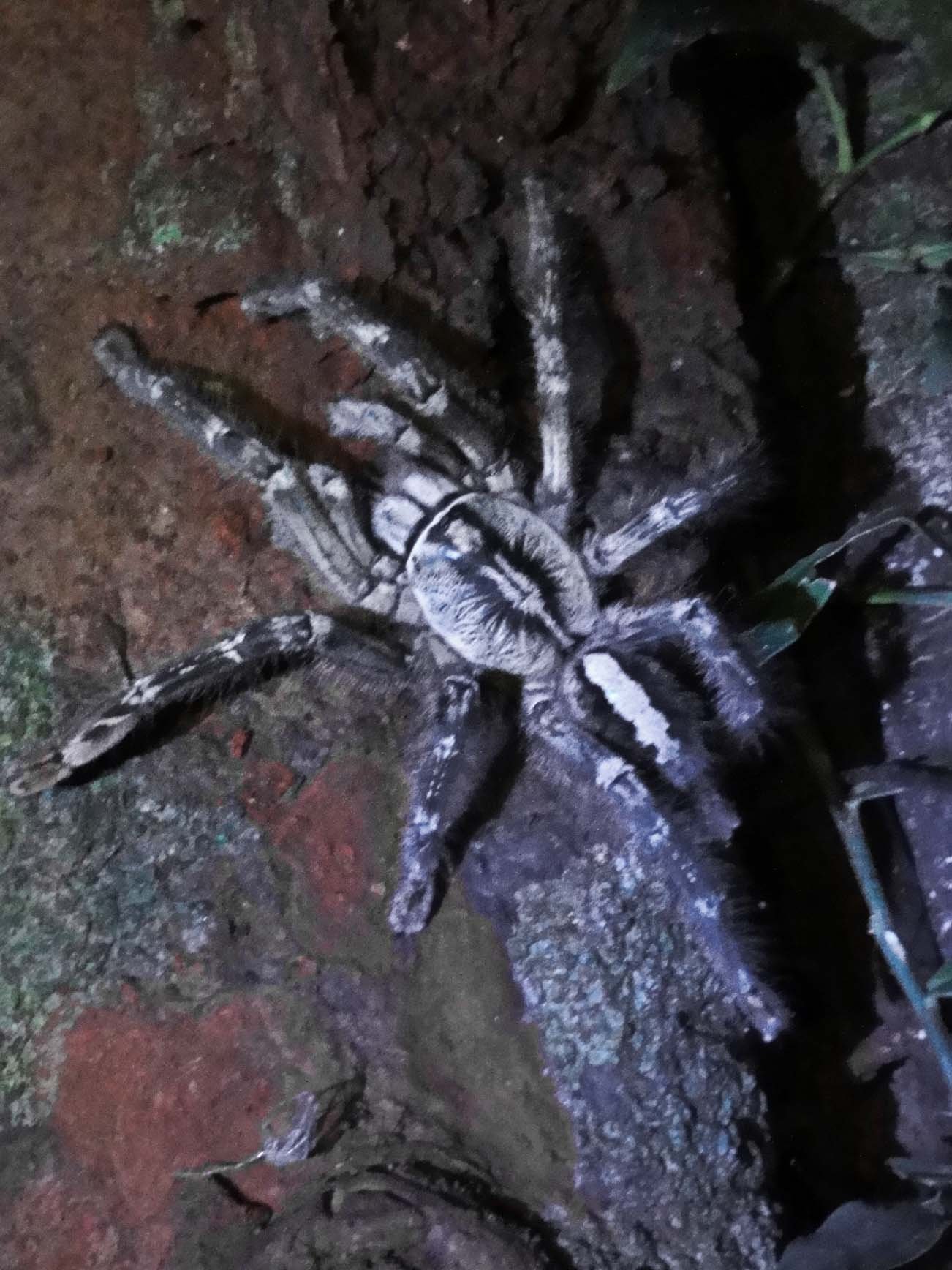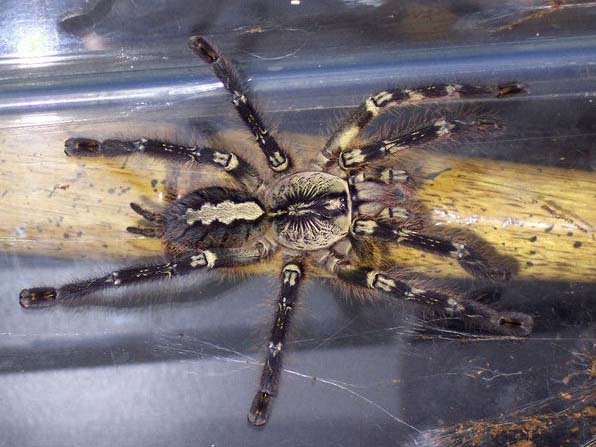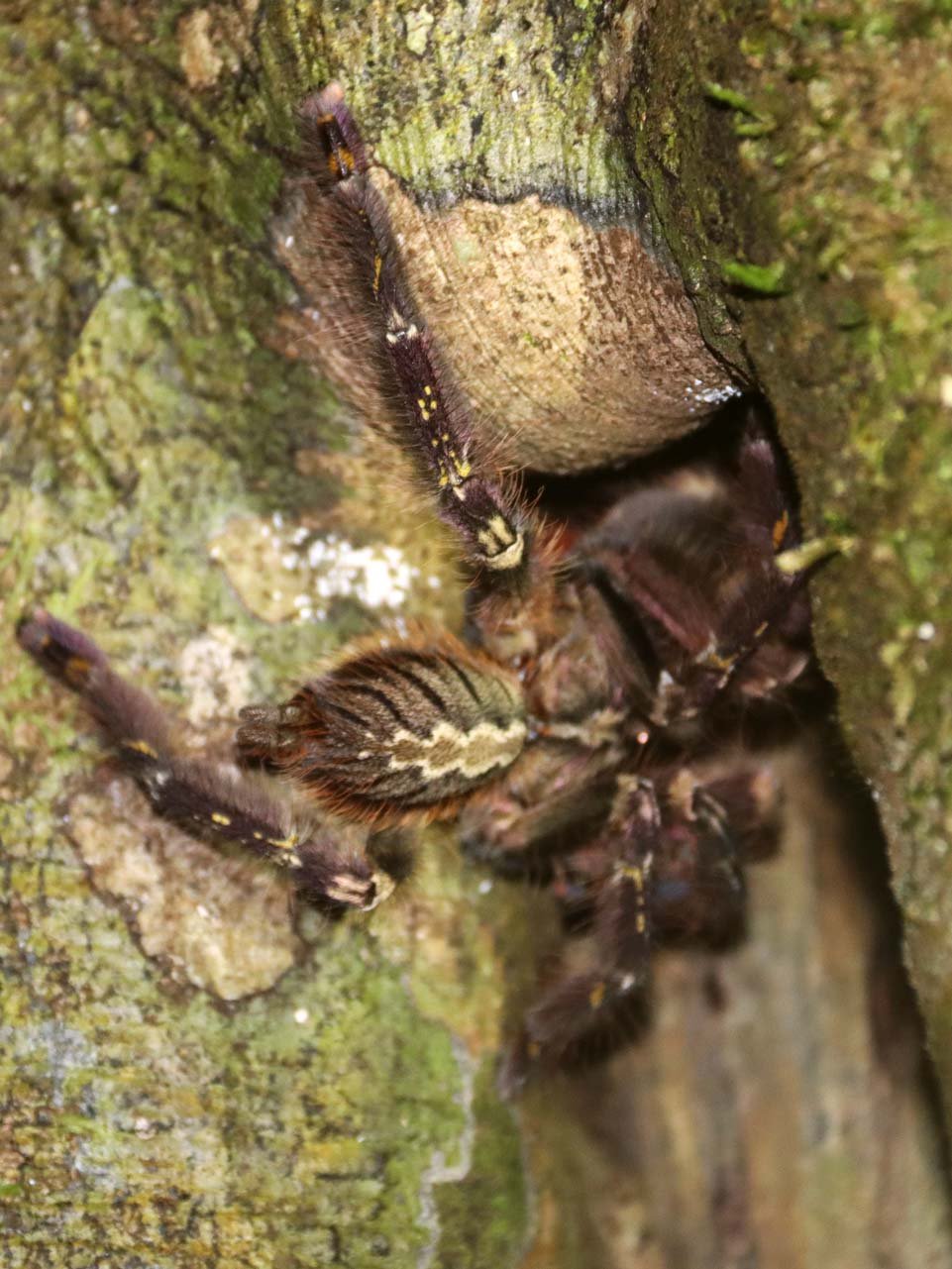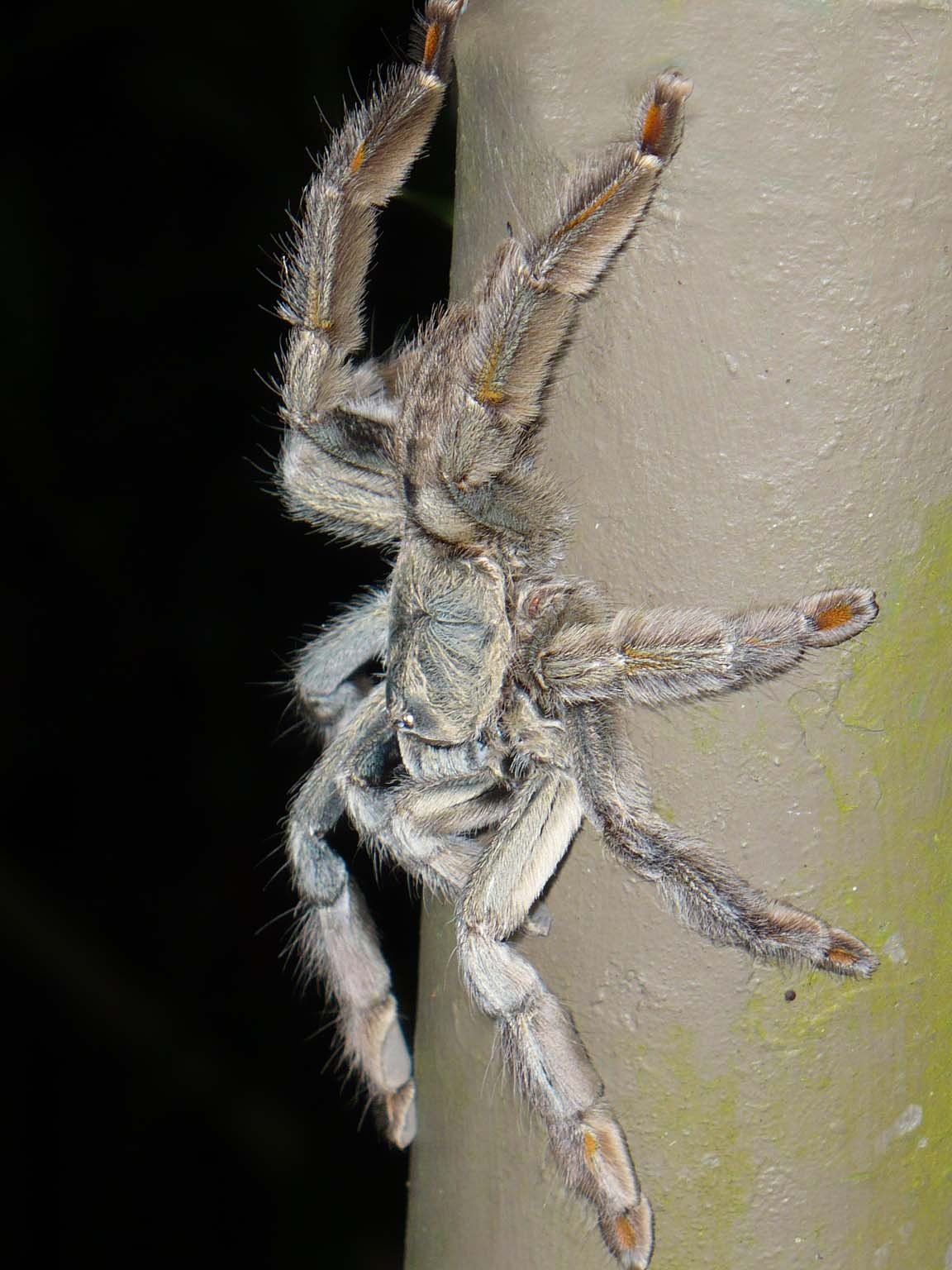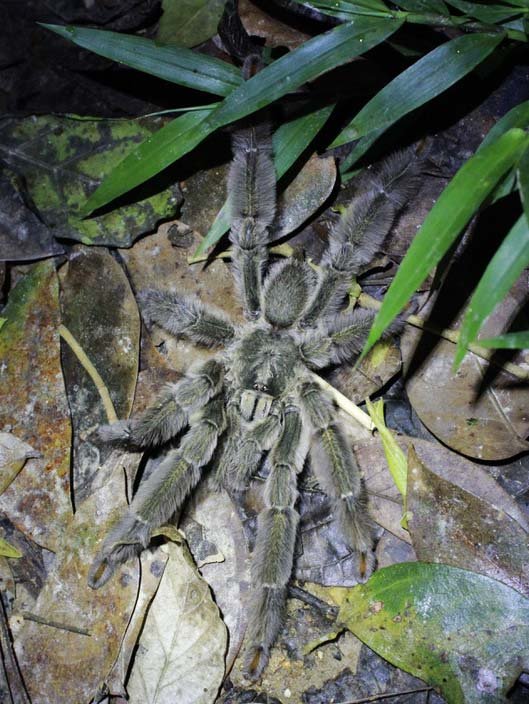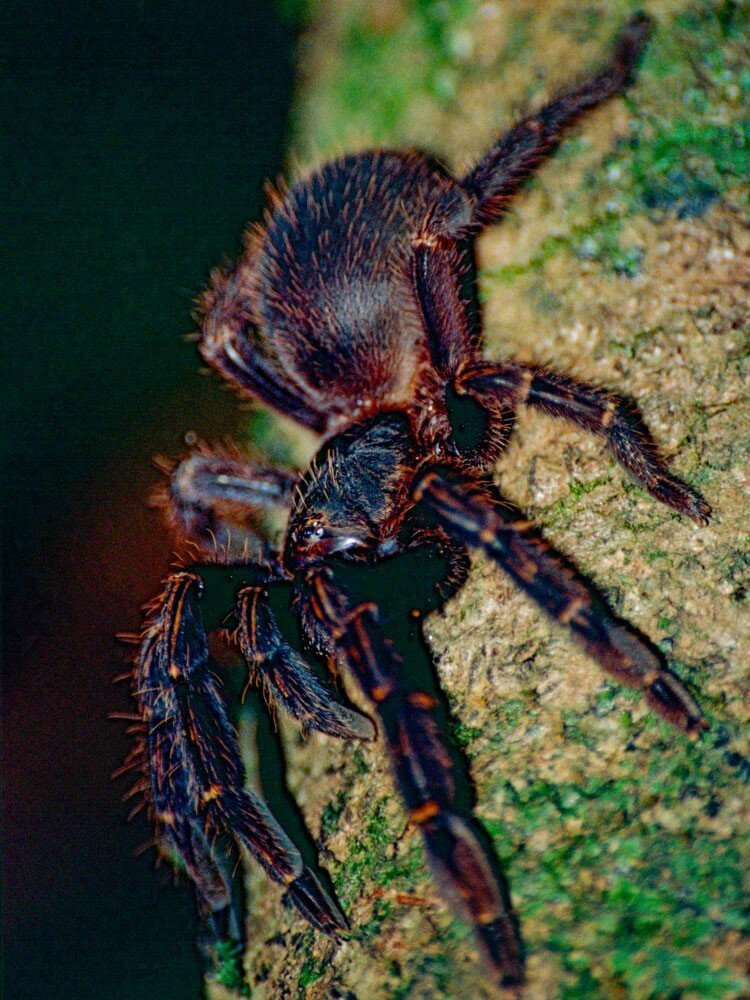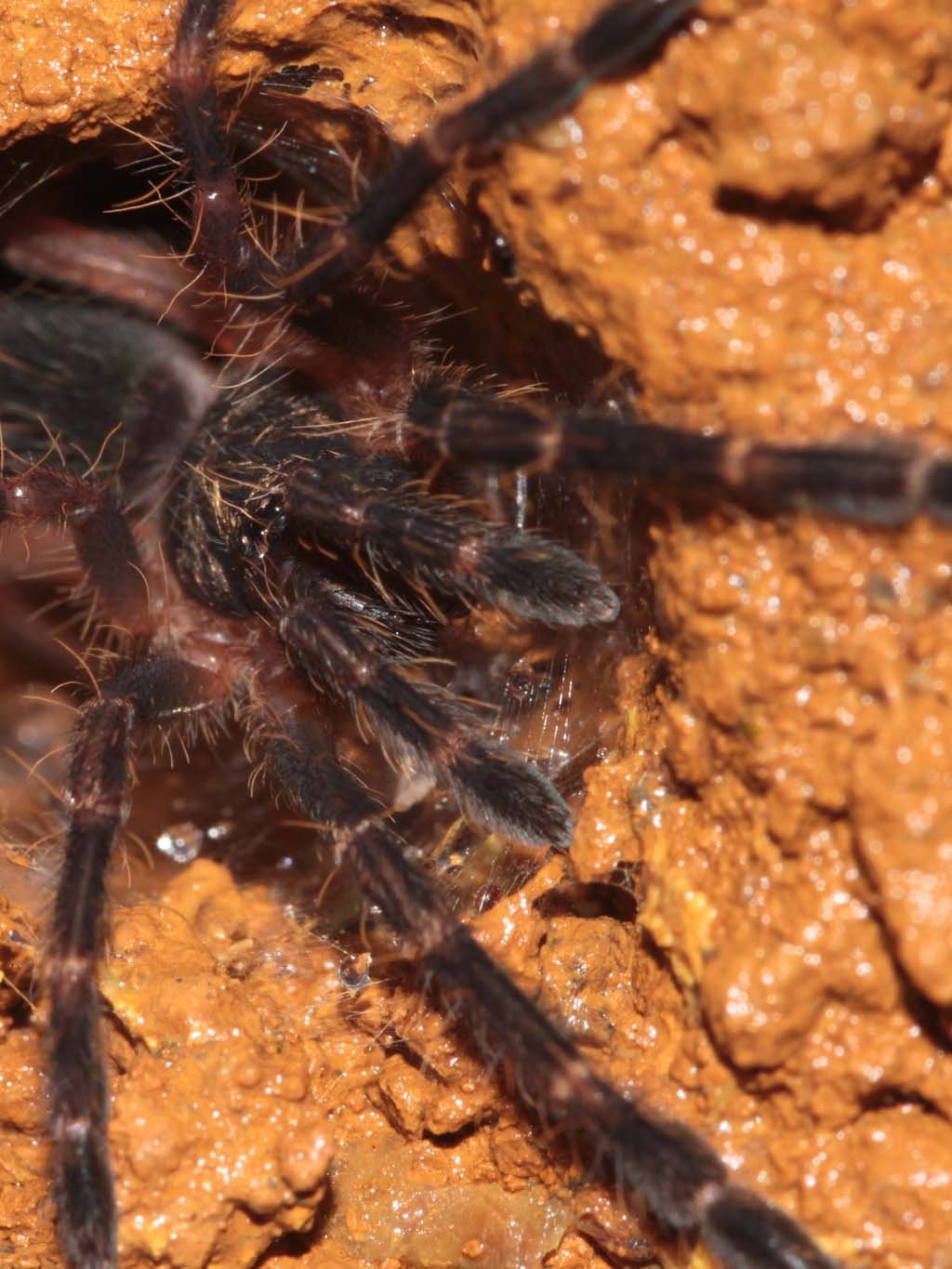Psalmopoeus reduncus
Psalmopoeus reduncus, commonly known as the Costa Rican Orange Mouth Tarantula, is a visually striking arboreal species native to the humid tropical forests of Costa Rica and surrounding Central American regions. It is named for the distinctive fiery orange setae surrounding its chelicerae, which contrast sharply with its otherwise dark olive to slate-brown body. This vibrant oral coloration, often glimpsed during feeding or defensive displays, sets it apart within the Psalmopoeus genus and adds a flash of color to its forest camouflage.
As an arboreal tarantula, P. reduncus spends much of its time off the ground, constructing dense silk retreats in tree hollows, bark crevices, or vertical enclosures. It is an agile and fast-growing predator, well adapted to life in elevated, humid microhabitats. Though considered a New World species, it lacks urticating hairs and instead relies on startling speed and potent venom for defense. It is not overtly aggressive but is known for being reactive and defensive when disturbed, making it best suited to experienced keepers or specialized display enclosures.
Psalmopoeus reduncus, commonly known as the Costa Rican Orange Mouth Tarantula, is a visually striking arboreal species native to the humid tropical forests of Costa Rica and surrounding Central American regions. It is named for the distinctive fiery orange setae surrounding its chelicerae, which contrast sharply with its otherwise dark olive to slate-brown body. This vibrant oral coloration, often glimpsed during feeding or defensive displays, sets it apart within the Psalmopoeus genus and adds a flash of color to its forest camouflage.
As an arboreal tarantula, P. reduncus spends much of its time off the ground, constructing dense silk retreats in tree hollows, bark crevices, or vertical enclosures. It is an agile and fast-growing predator, well adapted to life in elevated, humid microhabitats. Though considered a New World species, it lacks urticating hairs and instead relies on startling speed and potent venom for defense. It is not overtly aggressive but is known for being reactive and defensive when disturbed, making it best suited to experienced keepers or specialized display enclosures.


Psalmopoeus reduncus, commonly known as the Costa Rican Orange Mouth Tarantula, is a visually striking arboreal species native to the humid tropical forests of Costa Rica and surrounding Central American regions. It is named for the distinctive fiery orange setae surrounding its chelicerae, which contrast sharply with its otherwise dark olive to slate-brown body. This vibrant oral coloration, often glimpsed during feeding or defensive displays, sets it apart within the Psalmopoeus genus and adds a flash of color to its forest camouflage.
As an arboreal tarantula, P. reduncus spends much of its time off the ground, constructing dense silk retreats in tree hollows, bark crevices, or vertical enclosures. It is an agile and fast-growing predator, well adapted to life in elevated, humid microhabitats. Though considered a New World species, it lacks urticating hairs and instead relies on startling speed and potent venom for defense. It is not overtly aggressive but is known for being reactive and defensive when disturbed, making it best suited to experienced keepers or specialized display enclosures.
What's the ideal diet for a Costa Rican Orange Mouth Tarantula?
All Tarantulas can eat a variety of feeders. Stick to crickets, dubia roaches, silkworms, horned worms occasionally, and a superworm or mealworm as the occasional treat!
How should I keep a Costa Rican Orange Mouth Tarantula?
For this particular creature, you can start with the small Arboreal Bliss enclosure, and when they get to be about ⅓ the size, you will want to upgrade to the medium or large Arboreal Bliss enclosure. Feed them as slings once a week, twice if their opisthosoma (abdomen) looks small, but if the opisthosoma is wider than their prosoma (pneumothorax), then wait a couple of days to feed. For juveniles or adults, stick to feeding once a week, nothing larger than their opisthosoma. Make sure to keep a full water dish at all times; wider and deeper is preferred.
How long could a Costa Rican Orange Mouth Tarantula live?
Females are believed to live upwards of 12+ years, and males not exceeding around 4 years of age. All estimates are based on multiple sources.
















